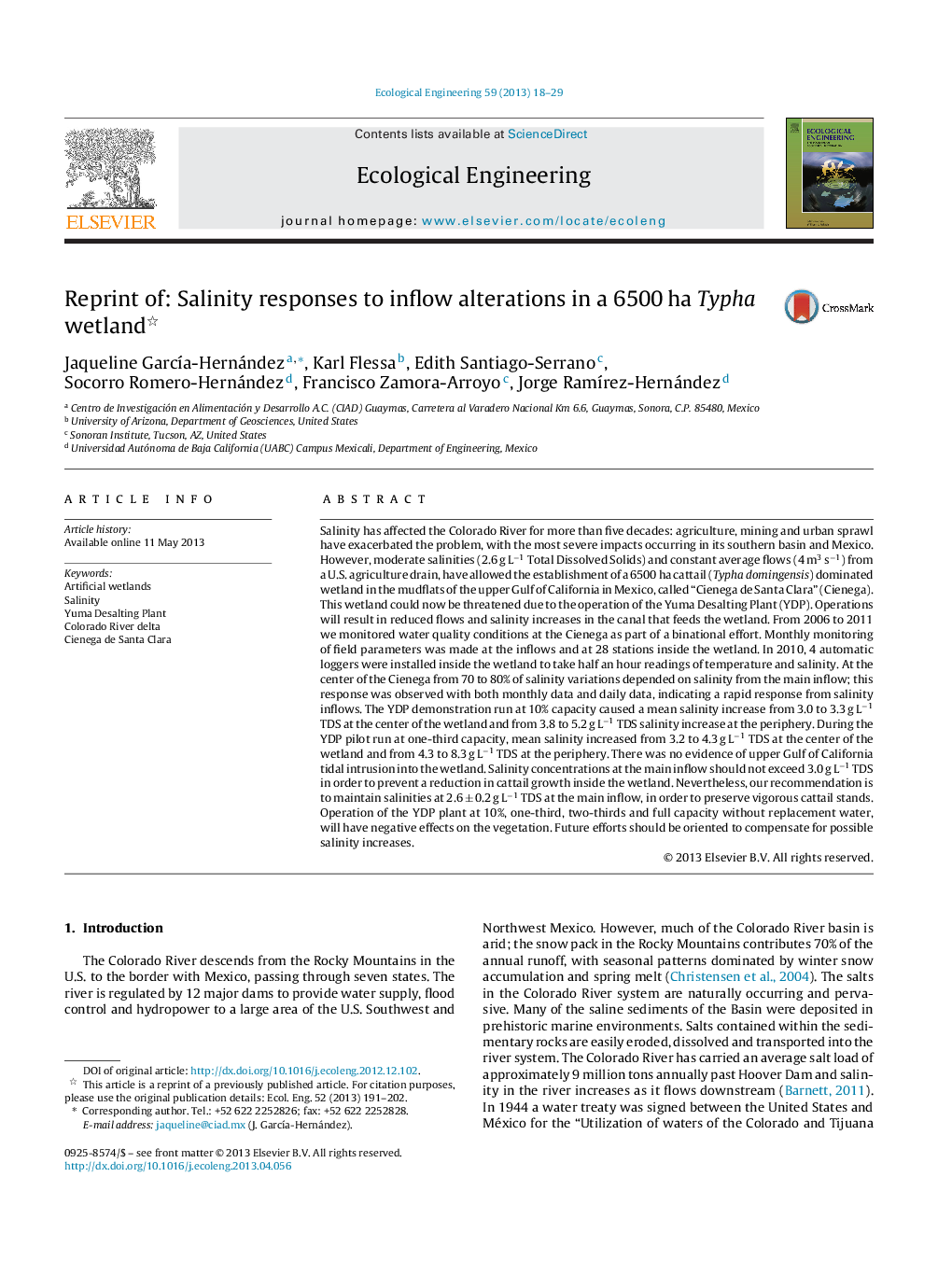| Article ID | Journal | Published Year | Pages | File Type |
|---|---|---|---|---|
| 4389708 | Ecological Engineering | 2013 | 12 Pages |
Salinity has affected the Colorado River for more than five decades: agriculture, mining and urban sprawl have exacerbated the problem, with the most severe impacts occurring in its southern basin and Mexico. However, moderate salinities (2.6 g L−1 Total Dissolved Solids) and constant average flows (4 m3 s−1) from a U.S. agriculture drain, have allowed the establishment of a 6500 ha cattail (Typha domingensis) dominated wetland in the mudflats of the upper Gulf of California in Mexico, called “Cienega de Santa Clara” (Cienega). This wetland could now be threatened due to the operation of the Yuma Desalting Plant (YDP). Operations will result in reduced flows and salinity increases in the canal that feeds the wetland. From 2006 to 2011 we monitored water quality conditions at the Cienega as part of a binational effort. Monthly monitoring of field parameters was made at the inflows and at 28 stations inside the wetland. In 2010, 4 automatic loggers were installed inside the wetland to take half an hour readings of temperature and salinity. At the center of the Cienega from 70 to 80% of salinity variations depended on salinity from the main inflow; this response was observed with both monthly data and daily data, indicating a rapid response from salinity inflows. The YDP demonstration run at 10% capacity caused a mean salinity increase from 3.0 to 3.3 g L−1 TDS at the center of the wetland and from 3.8 to 5.2 g L−1 TDS salinity increase at the periphery. During the YDP pilot run at one-third capacity, mean salinity increased from 3.2 to 4.3 g L−1 TDS at the center of the wetland and from 4.3 to 8.3 g L−1 TDS at the periphery. There was no evidence of upper Gulf of California tidal intrusion into the wetland. Salinity concentrations at the main inflow should not exceed 3.0 g L−1 TDS in order to prevent a reduction in cattail growth inside the wetland. Nevertheless, our recommendation is to maintain salinities at 2.6 ± 0.2 g L−1 TDS at the main inflow, in order to preserve vigorous cattail stands. Operation of the YDP plant at 10%, one-third, two-thirds and full capacity without replacement water, will have negative effects on the vegetation. Future efforts should be oriented to compensate for possible salinity increases.
